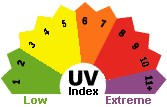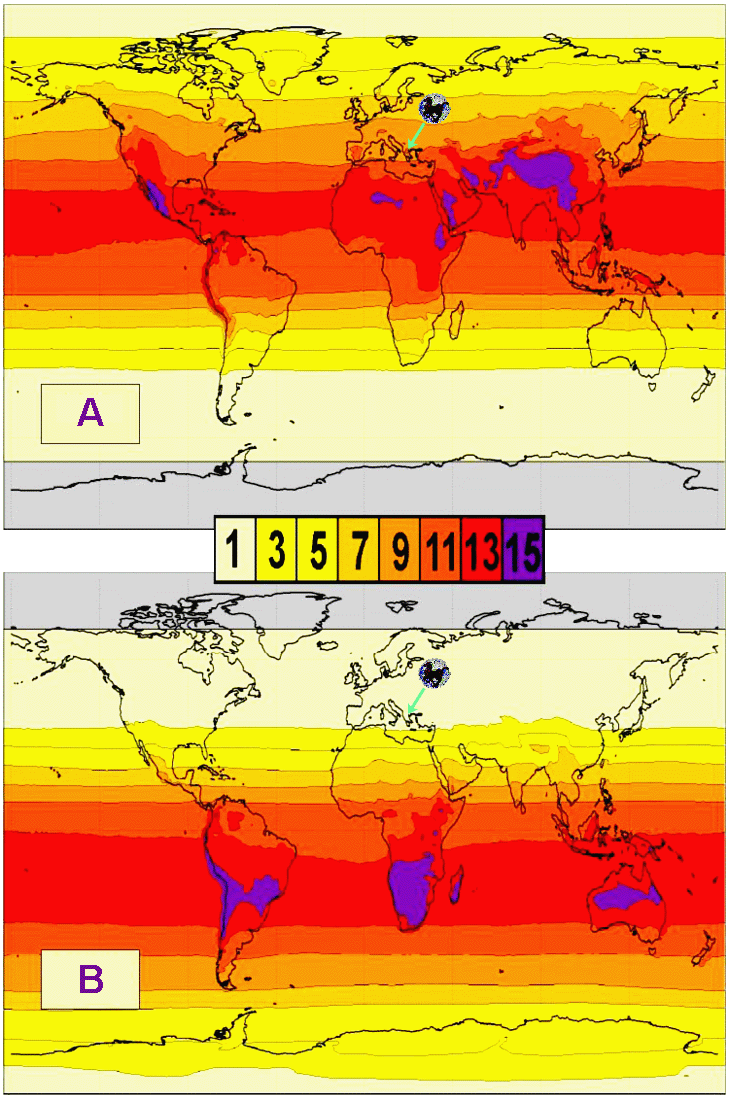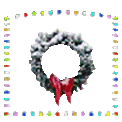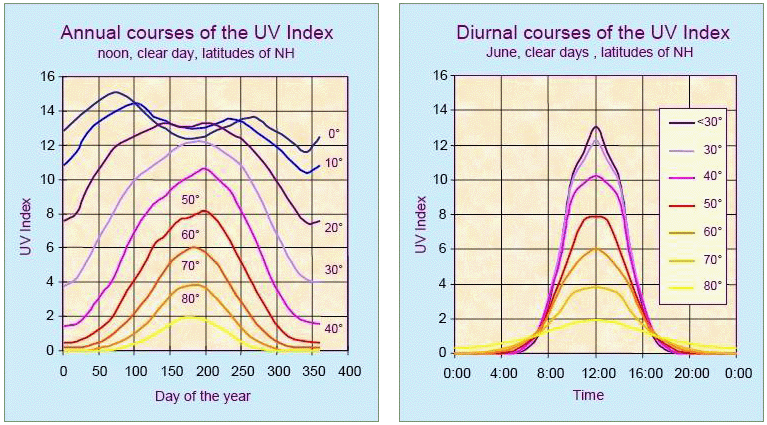|
Solar radiation is an important natural factor because it forms the Earth's climate and has a significant influence on the environment. The ultraviolet part of the solar spectrum (UV) plays an important role in many processes in the biosphere. It has several beneficial effects but it may also be very harmful if UV exceeds SAFE limits. If the amount of UV radiation is sufficiently high the self-protection ability of some biological species is exhausted and the subject may be severely damaged. This also concerns the human organism, in particular the skin and the eyes. To avoid damage from high UV exposures, both acute and chronic, people should limit their exposure to solar radiation by using protective measures.
Solar radiation includes ultraviolet radiation (UV), visible radiation (light), and infrared radiation (IR). The radiation is often characterised by its wavelength, usually expressed in nanometers (1nm=10-9m). When describing biological effects ultraviolet radiation is often subdivided into three spectral bands :
1. UV-C radiation (100-280 nm)
2. UV-B radiation (280- 315 nm)
3. UV-A radiation (315-400 nm)
UV radiation can be measured as an irradiance ( the power incident upon a surface unit area ) in units of W/m2, or as a radiant exposure, or dose ( the energy incident upon a surface unit area during a specified period of time ) in units of J/m2. The most important factors affecting the UV radiation reaching the Earth's surface are :
|
1. Atmospheric ozone
2. Solar elevation
3. Altitude
4. Atmospheric scattering
5. Clouds and haze
6. Ground reflection
|
The diurnal and annual variability of solar UV radiation reaching the ground is governed by astronomical and geographical parameters as well as by the atmospheric conditions. Since human activities affect the atmosphere, such as polluting the air and influencing the ozone layer, they also affect the UV radiation reaching the ground. As a consequence, solar UV radiation is a highly variable environmental parameter that differs widely in time and space. The need to reach the public with simple-to-understand information about UV and its possible detrimental effects led scientists to define a parameter that can be used as an indicator of the UV exposures. This parameter is called the UV Index. It is related to the well known erythemal effects of solar UV radiation on human skin and it has been defined and standardised under the umbrella of several international institutions.
The UV index

# Is a unit of measure of UV levels relevant to the effects on human skin (UV induced erythema)
# Is defined as the effective irradiance obtained by integrating the spectral irradiance weighted by the CIE (1987) reference action spectrum up to and including 400 nm normalised to 1.0 at 297nm
# Is expressed numerically as the equivalent of multiplying the time weighted average effective irradiance (W/m2) by 40
# If daily maxima or forecast are reported, a 30-minute time averaged values of the effective irradiance should be used when calculating the UV Index
# If real-time observations of the UV Index are presented, it is recommended touse 5-10 minute averages
|

|
The UV index at July (A) and January (B)

|
Estimation of global geographical distribution of the UV Index in the summer and winter months at noon, for clear sky.

|















